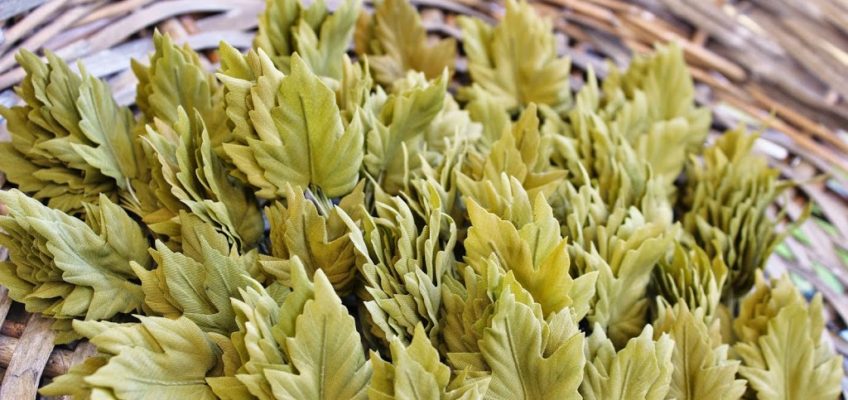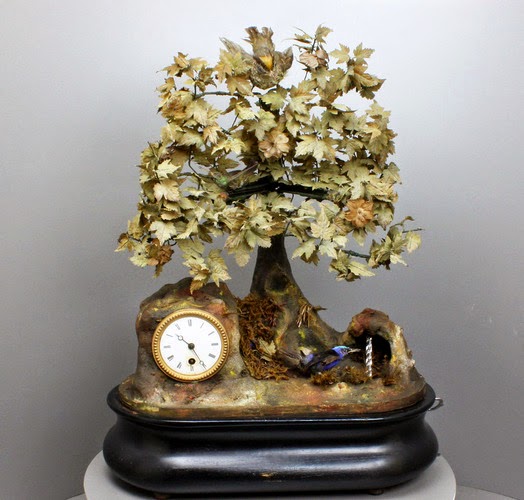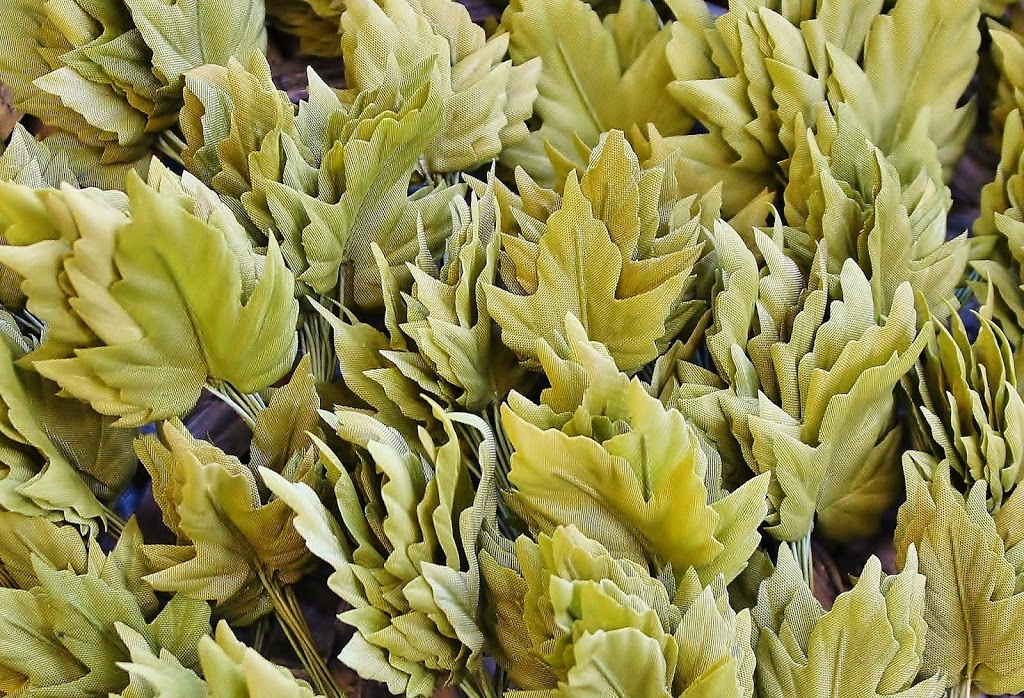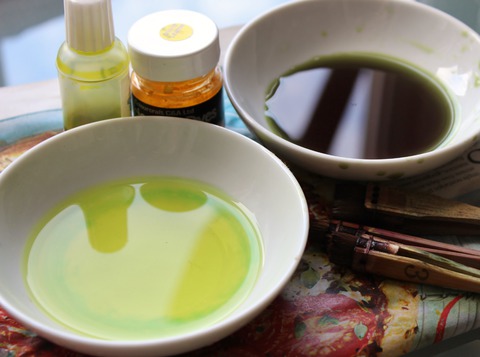 The 2015 Wedding Season is in full swing. I would not be far off if I suggest that some of you are currently making lots of white flowers. So I thought I would share some tips on how to dye (or not to dye?) the fabric for making white silk flowers.
The 2015 Wedding Season is in full swing. I would not be far off if I suggest that some of you are currently making lots of white flowers. So I thought I would share some tips on how to dye (or not to dye?) the fabric for making white silk flowers.
Your actions will depend on the task in hand. Certainly there are situations when we need to create a 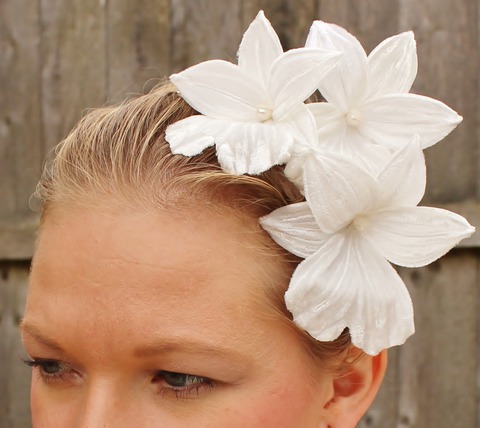 pure white flower, in warm white or even in cold bluish white. In this case you just need to choose your fabric right, because different fabrics, although all white can vary in shades. Bleached silks are usually cold white, whilst unbleached tend to be of warm, ivory shades. Simply choose the best suitable fabric for the job and skip the dyeing stage altogether.
pure white flower, in warm white or even in cold bluish white. In this case you just need to choose your fabric right, because different fabrics, although all white can vary in shades. Bleached silks are usually cold white, whilst unbleached tend to be of warm, ivory shades. Simply choose the best suitable fabric for the job and skip the dyeing stage altogether.
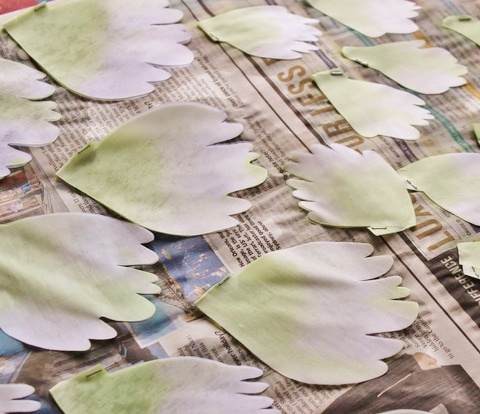 On the other hand, if you would like to create a more realistic white flower, you will need to use some dyes. Why? Because if you look at the living flowers either in the pictures or fresh in your garden or vase, they are never just white.
On the other hand, if you would like to create a more realistic white flower, you will need to use some dyes. Why? Because if you look at the living flowers either in the pictures or fresh in your garden or vase, they are never just white.
Very often the petals are tinted at the base with a choice of colours ranging from light green to yellow to pink etc.
Another thing to consider is either colour the rest of the petal with a very diluted green 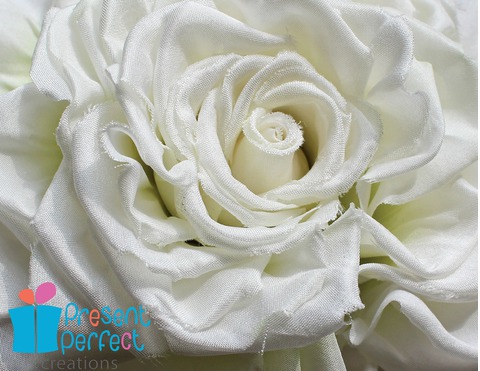 yellow to create more of an ivory look of the flower or add some strokes of this colour here and there on the petals using a wide brush. The strokes of dye will not be seen as such but when assembled will let the petals look more realistic than just white pieces of fabric put together. The flower will have a depth to it. This technique works very well with such multipetal flowers like roses, peonies, fantasy poppies etc. So next time you are making a white flower try to add a little bit of colour to it and see the flower coming to life in your hands.
yellow to create more of an ivory look of the flower or add some strokes of this colour here and there on the petals using a wide brush. The strokes of dye will not be seen as such but when assembled will let the petals look more realistic than just white pieces of fabric put together. The flower will have a depth to it. This technique works very well with such multipetal flowers like roses, peonies, fantasy poppies etc. So next time you are making a white flower try to add a little bit of colour to it and see the flower coming to life in your hands.
If you happen to own any Japanese flower making books go through them as they often show the process of dyeing in quite a detail. If not we sometimes have an opportunity to offer a limited number of these books on our website. To see what is available at the moment please click here.
If you would lite to receive more of useful information on how to make fabric and leather flowers in your inbox please feel free to subscribe to our newsletter
[grwebform url=”http://app.getresponse.com/view_webform.js?wid=10058202&u=3lMQ” css=”on” center=”off” center_margin=”200″/]
